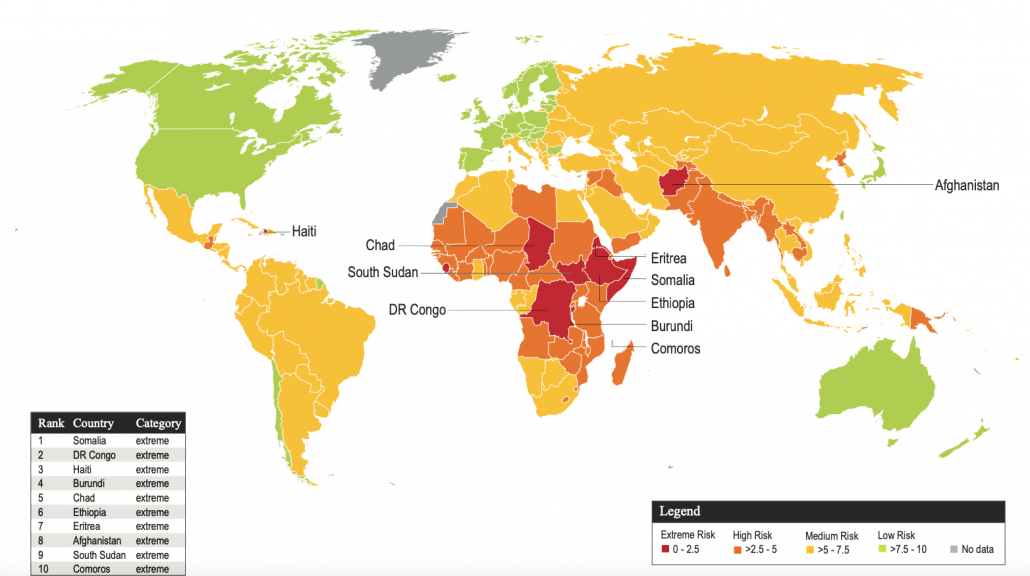What are the differences in global calorie intake and food supply?
There are significant difference in food supply and calorie intake.
In 1996 the World Food Summit defined food security as ‘when all people at all times have access to sufficient, safe, nutritious food to maintain a healthy and active life’.
Many people are suffering from undernourishment and do not have food security (i.e. insufficient quantity of food). The map below shows global food security risk.

Global food security risk
Although the world produces enough food for everyone, access to it is not equal. If the world’s food was shared evenly every person would receive approximately 2,720 calories per day. This is more than enough to live a healthy life. However, there are significant differences between calorie intake around the world. The map below shows that the overwhelming majority of the countries suffering the lowest intake of all are in sub-Saharan Africa.
Another issue relating to food consumption is the types of diet. In HICs one-quarter of diets is made up eggs, milk, cheese, meat and fish. However, in LICs suffering the worst insecurity, cereals make up over half of the diet with a further twenty per cent from tubers such as yams. Although cereals and tubers provide energy (calories) they are low in other nutrients. This leads to undernourishment.
Use the images below to explore related GeoTopics.